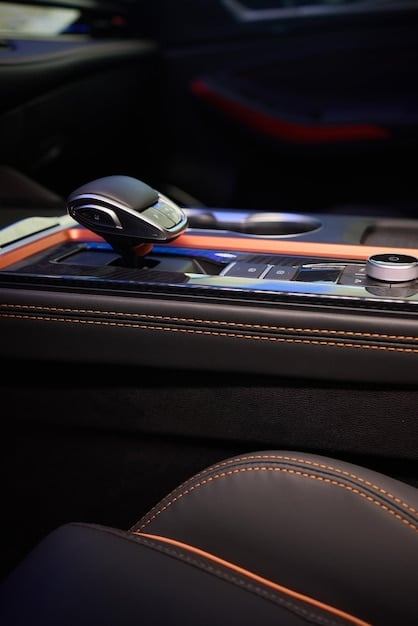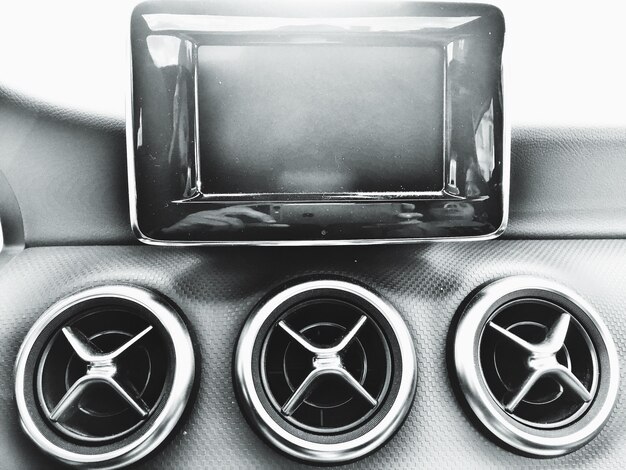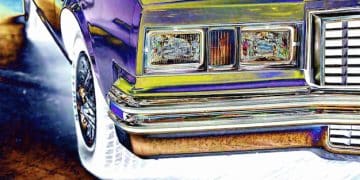Unveiling the Psychology of Car Customization: Expressing Your Identity

The Psychology of Car Customization: Expressing Identity Through Automotive Modification explores how individuals utilize car modifications to visually represent their identities, desires, and cultural affiliations, transforming a vehicle into a canvas for self-expression and communication.
The desire to personalize our belongings is a deeply ingrained human trait. When it comes to vehicles, this urge manifests as the psychology of car customization: expressing identity through automotive modification. From subtle aesthetic tweaks to comprehensive performance upgrades, car enthusiasts invest time, money, and emotion into making their rides truly their own.
Why Do We Customize? The Psychological Underpinnings
At its core, car customization is about more than just aesthetics; it’s a reflection of our inner selves. It allows us to project who we are, or who we aspire to be, onto a tangible object that we interact with daily. But what are the specific psychological drivers behind this phenomenon?
Self-Expression and Identity
Our vehicles become extensions of ourselves, communicating our values, tastes, and aspirations to the world. Customization allows for unique expression, differentiating the car owner from the crowd and broadcasting individuality.
Control and Mastery
Modifying a car provides a sense of control and mastery over one’s environment. Each upgrade or aesthetic modification represents a deliberate decision, reinforcing a sense of agency and competence.

Here are some ways self-expression and control come into play:
- Aesthetic Choices: Selecting specific colors, finishes, and accessories.
- Performance Upgrades: Installing aftermarket parts to boost speed, handling, or sound.
- Functional Modifications: Adding features that cater to individual needs or preferences.
In conclusion, car customization connects directly to deep needs for self-expression and a sense of mastery over our possessions and the image we project.
The Car as a Canvas: Projecting Personality
A car is more than just a mode of transportation; it’s a blank canvas waiting to be transformed. Through various modifications, individuals can project distinct aspects of their personality, interests, and affiliations.
Visual Identity: The Aesthetics of Modification
The visual appearance of a customized car speaks volumes about the owner’s personal brand. From paint jobs to body kits, these modifications serve as visual indicators of identity.
Functional Identity: Performance and Utility
Modifications are not only aesthetic; they can also reflect functional priorities. Someone might customize a car for off-road capabilities or high-performance driving, subtly or overtly communicating about their adventures, professions, or hobbies.
Consider these transformations:
- Paint and Wraps: Bold colors or intricate designs that mirror specific tastes or symbolic identities.
- Wheels and Tires: Choices that define a car’s stance and performance capabilities.
- Accessories: Additions that signify hobbies or interests, such as roof racks for outdoor gear.
Customization serves as an outward expression of inner personality as a car moves from being just a car, to a mobile representative of its owner.

Car Customization as a Form of Nonverbal Communication
Think of your car as a billboard on wheels. What message is it sending? Believe it or not, your vehicle is constantly communicating aspects of your identity, culture, and values. Customization amplifies this nonverbal dialogue.
Signaling Status and Affluence
For some, luxury modifications or rare parts signify status and financial success. This form of customization communicates achievement and aspiration.
Identifying with Subcultures
Certain modifications are closely associated with specific subcultures, like lowriders or tuner cars. This act of customization signals belonging and solidarity with a particular group.
Here’s how cars silently communicate identity:
- Sound Systems: Upgraded audio systems suggest a love for music and entertainment.
- Tinted Windows: May signal a desire for privacy or an association with a certain style.
- Decals and Stickers: Displaying affiliations with brands, causes, or communities.
The art of expressing oneself through automotive modification includes understanding the nonverbal communication that emanates from a customized car.
The Influence of Social and Cultural Factors
Car customization doesn’t occur in a vacuum. Social and cultural influences play a significant role in shaping trends, aesthetics, and the overall perception of modifications. These influences can range from geographic location to peer groups.
Cultural Norms and Regional Styles
Different regions often have unique customization styles influenced by local norms and available resources. Consider the distinct styles of lowriders in Southern California compared to the tuner culture in Japan.
The Role of Media and Popular Culture
Movies, TV shows, and video games often showcase customized cars, inspiring enthusiasts to replicate or adapt these styles. The media significantly shape trends and aspirations.
How do trends spread?
- Car Shows and Events: Events serve as platforms for showcasing new trends and innovations.
- Online Forums and Communities: Digital spaces foster discussions, sharing ideas, and collective inspiration.
- Influencers and Celebrities: High-profile figures can popularize specific modifications and styles.
The collective trends we see in automotive customization are shaped substantially by evolving cultural and societal currents.
DIY Culture and the Empowerment of Customization
One of the most compelling aspect of customization is the do-it-yourself (DIY) ethic. DIY enables car enthusiasts to forge unique identities and express themselves while building knowledge, lowering costs, and creating a community.
Learning and Skill Development
The DIY approach offers opportunities to learn new skills, from basic maintenance to advanced modifications. This process contributes to personal growth and empowerment.
Community Building through Shared Projects
DIY projects often foster community building, with enthusiasts sharing knowledge, tools, and support. This collaborative environment reinforces the shared passion for customization.
Why Choose DIY?
- Cost Savings: Performing modifications yourself can significantly reduce expenses.
- Personal Satisfaction: There’s a sense of accomplishment in completing a project with your own hands.
- Unique Results: DIY allows for more tailored and personalized outcomes that may not be available commercially.
For many car enthusiasts, becoming more deeply involved in their cars through the DIY ethos results in empowerment and greater fulfillment.
Risks and Considerations: The Dark Side of Customization
While customization offers numerous benefits, it’s essential to acknowledge the potential risks and downsides. Overspending, safety hazards, and legal compliance are considerations that require attention.
Financial Strain and Overspending
The pursuit of customization can sometimes lead to financial strain, with enthusiasts overspending on modifications. Budgeting and prioritization are essential to avoid debt.
Safety Implications and Legal Compliance
Certain modifications can compromise vehicle safety or violate local regulations. It’s crucial to ensure that all modifications comply with safety standards and legal requirements.
Conclusion
Key Takeaways
Car Customization and Identity
Key Aspects
Description
Expression
Personal expression & identity declaration through customization
Modification
The psychology of automotive modification driving self-expression
Cultural Trends
Social & cultural influcence on the trend of customization
Car as canvas and identity proyection by exterior modifications and design choices
DIY ethic building community and allowing car owners to create a brand
High costs for modifications and risks relating vehicle tampering and legal issues
What motivations drive car customization?
The desire for self-expression, control, and a unique identity.
How does car customization reflect personal identity?
Through aesthetic choices, performance upgrades, and functional modifications, a car can visually represent the values, tastes, and aspirations of its owner.
How do social and cultural factors influence car customization?
Regional styles, media, online forums, and influencers all play a role in shaping customization trends and aesthetics.
What are the potential risks of car customization?
Overspending, safety hazards, and legal compliance are potential risks associated with car customization.
How does DIY culture contribute to car customization?
DIY enhances empowerment, skill development, and community building and reduces project cost.
Customizing vehicles is about expressing identity rather than transport, it is a canvas of creativity and cultural meanings
Read more content





